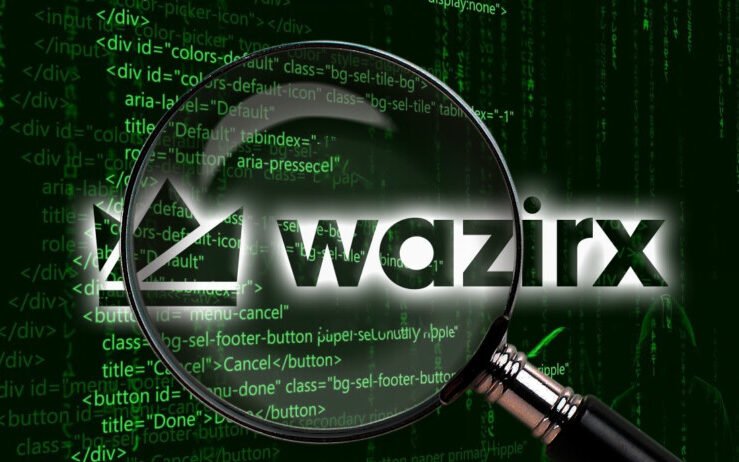Introduction About What is Web 3.0
The internet has evolved in fascinating ways over the years, and Everyone want to Know What is Web 3.0 is the next big leap in this digital revolution. But what exactly is Web 3.0, and how does it affect the world of cryptocurrencies? Let’s dive deep into this exciting new era of the internet and explore its potential impact on cryptocurrencies.
Outline
- What is Web 3.0?
- The Evolution of the Web: From Web 1.0 to Web 3.0
- What is Web 3.0 in Cryptocurrency?
- Key Characteristics of Web 3.0
- How is Web3 Connected to Crypto?
- Blockchain and Decentralization in Web 3.0
- What is Web3 Explained Simply?
- The Role of Cryptocurrencies in Web 3.0
- Smart Contracts and dApps in Web 3.0
- How Web 3.0 Enhances User Privacy
- The Impact of Web 3.0 on Financial Systems
- Why Cryptocurrencies Are Vital to Web 3.0
- Potential Challenges of Web 3.0
- Future of Web 3.0 and Cryptocurrencies
- Conclusion
- Frequently Asked Questions
1. What is Web 3.0?
Web 3.0 represents the third generation of the internet, characterized by decentralization, user ownership, and enhanced interactivity. While Web 1.0 focused on static content and Web 2.0 emphasized user-generated content, Web 3.0 aims to create a decentralized ecosystem where users have control over their data and online interactions. It’s often powered by blockchain technology and cryptocurrencies.
2. The Evolution of the Web: From Web 1.0 to Web 3.0
To understand Web 3.0, it’s crucial to look back at its predecessors. Web 1.0 was the “read-only” internet, a time when users could consume information but had limited interaction. Web 2.0, on the other hand, introduced the social web, enabling users to create, share, and interact with content through platforms like social media. Now, Web 3.0 promises to disrupt the centralized control of these platforms, allowing users to regain ownership of their data.

3. What is Web 3.0 in Cryptocurrency?
Web 3.0 in cryptocurrency refers to the integration of blockchain and crypto technology into the fabric of this new decentralized web. With Web 3.0, digital currencies and tokens are at the forefront, facilitating decentralized finance (DeFi), peer-to-peer transactions, and the creation of decentralized applications (dApps) that operate without intermediaries.
4. Key Characteristics of Web 3.0
- Decentralization: Data is not stored on a single server but distributed across nodes.
- Trustless and Permissionless: Interactions are transparent and do not require trust in intermediaries.
- Ownership of Data: Users regain control over their personal data and digital identity.
5. How is Web3 Connected to Crypto?
Web 3.0 is tightly linked to cryptocurrencies because the core technologies that power this new version of the internet—blockchain and decentralized systems—are the same that underpin crypto assets. For instance, blockchain allows Web 3.0 applications to function in a decentralized, transparent way, ensuring security, immutability, and trustless interactions. Cryptocurrencies act as the medium for transactions within this decentralized ecosystem.
6. Blockchain and Decentralization in Web 3.0
At the heart of Web 3.0 is blockchain technology, which enables decentralized networks. In Web 3.0, users can interact directly with each other without needing an intermediary, such as a bank or a tech giant, to facilitate transactions. Blockchain’s transparency and security make it the ideal technology for this decentralized web.
7. What is Web3 Explained Simply?
Put simply, Web 3.0 is an internet where individuals have the power. Instead of relying on centralized companies like Google, Facebook, or Amazon, Web 3.0 allows users to interact with the web without giving up their personal data to these corporations. In Web 3.0, your data is yours, and cryptocurrencies help facilitate that control.
8. The Role of Cryptocurrencies in Web 3.0
Cryptocurrencies play an essential role in Web 3.0 by acting as the fuel for decentralized networks. In Web 3.0, digital assets like Ethereum or Bitcoin are used for a wide variety of transactions, from smart contracts to decentralized apps. These currencies help to create trustless, secure interactions where users can exchange value without the need for a central authority.
Related Reading: What is Crypto Mining?
9. Smart Contracts and dApps in Web 3.0
Smart contracts are one of the building blocks of Web 3.0. These self-executing contracts allow for trustless agreements between parties. Decentralized applications (dApps) leverage smart contracts to create services that don’t rely on centralized servers. Cryptocurrencies are used to fuel these apps, paying for transaction fees and rewarding users.
10. How Web 3.0 Enhances User Privacy
In Web 3.0, privacy is a priority. Users don’t have to rely on big tech companies to store their data. Instead, blockchain technology ensures that users maintain control over their information. Cryptographic techniques ensure that transactions and interactions are secure, without exposing users’ private details.
11. The Impact of Web 3.0 on Financial Systems
The financial landscape could change drastically with Web 3.0. Decentralized finance (DeFi) allows for peer-to-peer transactions, lending, and borrowing without intermediaries like banks. Cryptocurrencies facilitate this, providing a means of exchange in decentralized networks that challenge the current banking system.
Related Reading: The Ultimate Guide to Crypto Mining Rigs in 2024
12. Why Cryptocurrencies Are Vital to Web 3.0
Cryptocurrencies and blockchain are essential for Web 3.0 because they enable the decentralization of networks and services. Without digital assets, there would be no way to facilitate trustless transactions, pay for services, or interact within decentralized applications.
13. Potential Challenges of Web 3.0
While Web 3.0 holds immense promise, it faces challenges such as scalability, regulatory hurdles, and adoption. Cryptocurrencies, though crucial to Web 3.0, must also overcome issues like volatility and security concerns before they can fully integrate into this new digital era.
14. Future of Web 3.0 and Cryptocurrencies
The future of Web 3.0 and cryptocurrencies is intertwined. As more users seek privacy, ownership, and decentralized alternatives to traditional internet services, the demand for blockchain technology and crypto will only grow. We could see widespread adoption of decentralized apps and a transformation of industries such as finance, healthcare, and entertainment.
Related Reading: What is Crypto Mining Calculator: Everything You Need to Know in 2025
15. Conclusion of What is Web 3.0
Web 3.0 is not just an upgrade to the internet—it’s a paradigm shift. It redefines how we interact online, putting the power back into the hands of users through decentralization, transparency, and cryptocurrencies. As blockchain technology continues to mature, Web 3.0 could reshape everything from financial systems to personal privacy.
FAQs of What is Web 3.0
1. What is Web 3.0 in cryptocurrency?
Web 3.0 in cryptocurrency refers to the integration of blockchain and crypto technologies in a decentralized internet, where users have control over their data and online interactions.
2. How is Web 3.0 connected to crypto?
Web 3.0 and cryptocurrencies are connected through blockchain technology, which enables decentralized, transparent, and secure online interactions without intermediaries.
3. What is Web 3.0 explained simply?
Simply put, Web 3.0 is a decentralized version of the internet that gives users control over their data, using blockchain technology to enhance privacy and security.
4. What is the role of cryptocurrency in facilitating Web 3.0?
Cryptocurrencies play a vital role by enabling decentralized finance (DeFi) and acting as the currency for transactions in decentralized applications (dApps).
5. What are smart contracts in Web 3.0?
Smart contracts are self-executing contracts in Web 3.0 that facilitate trustless agreements between users, using cryptocurrencies to complete transactions automatically.


